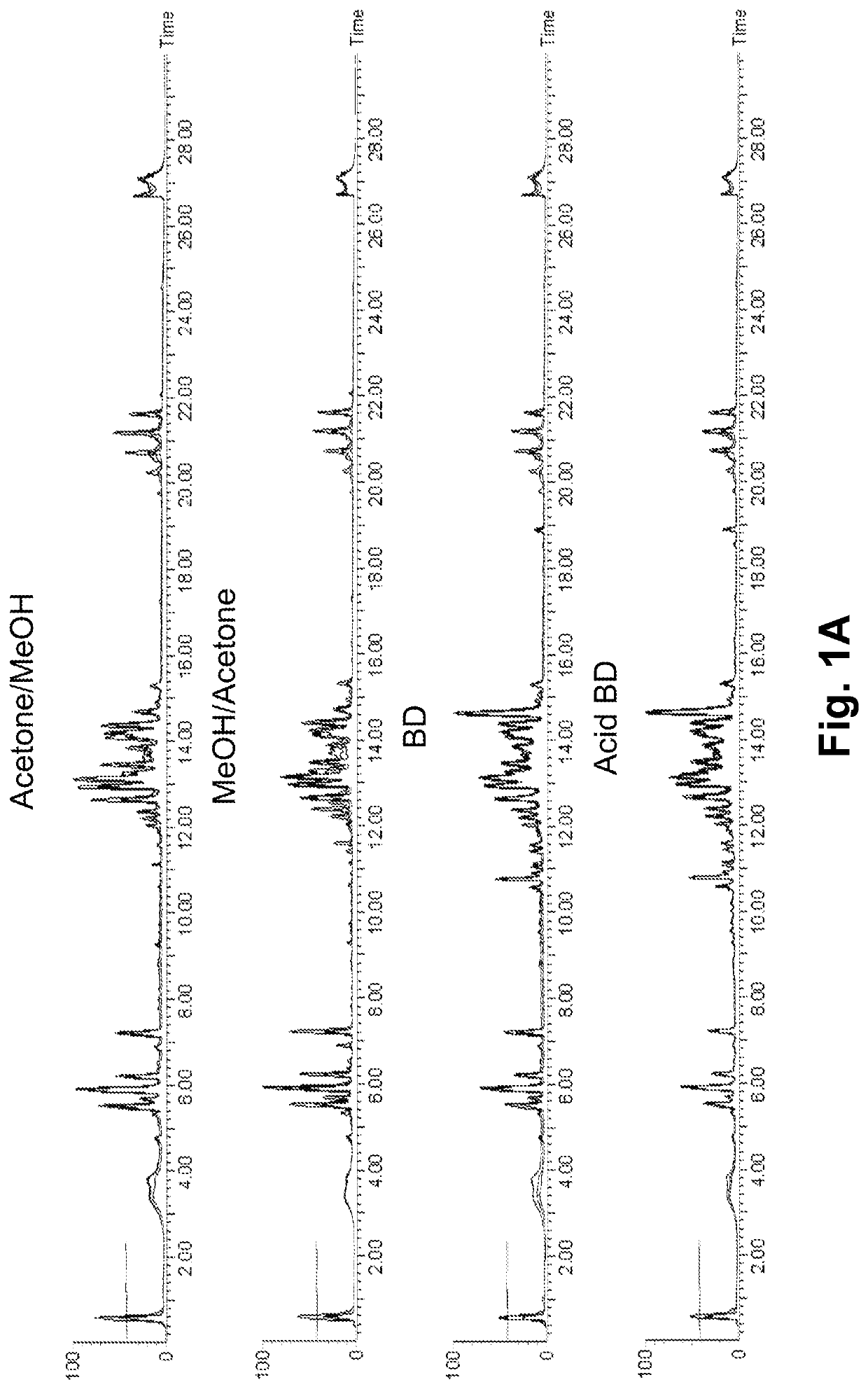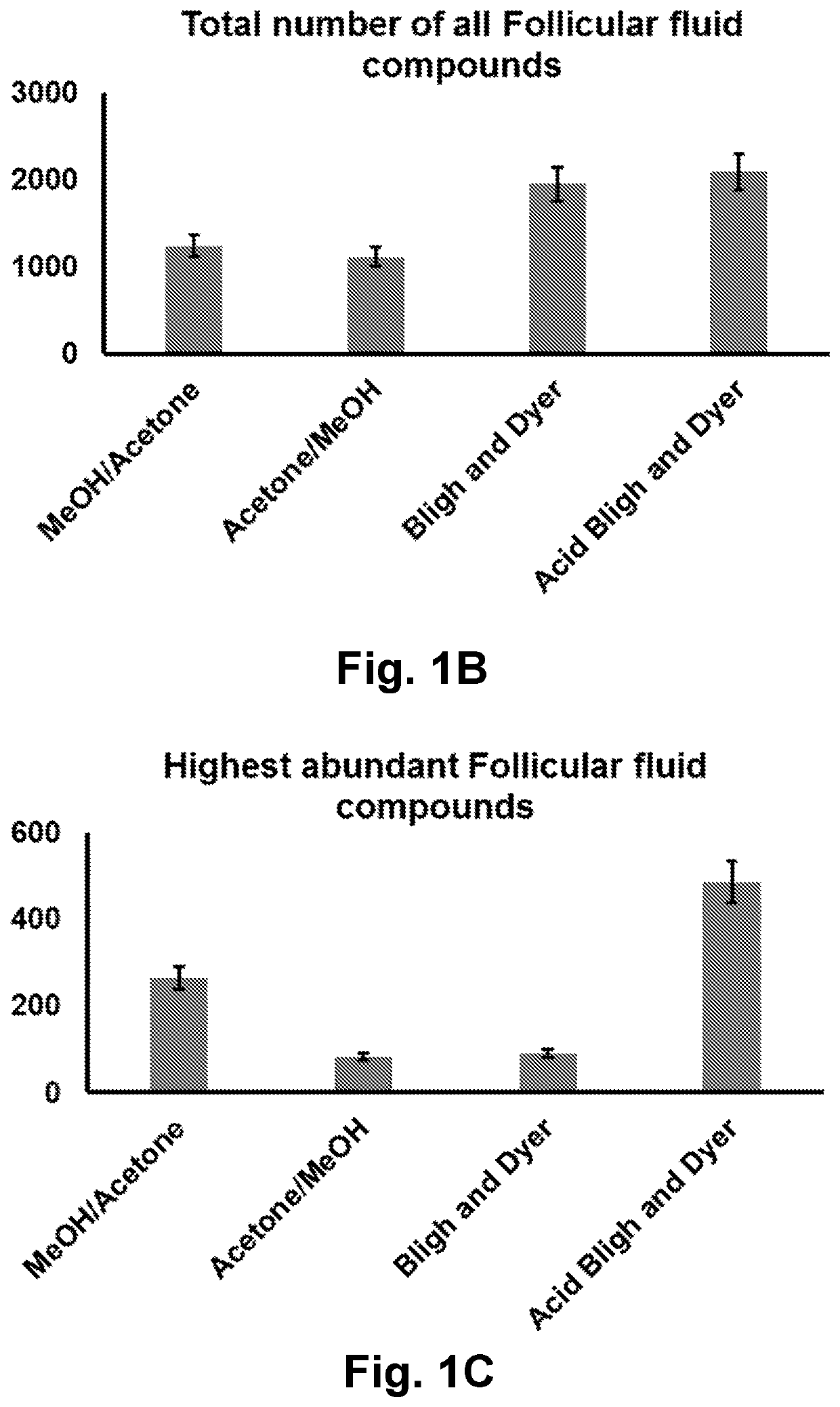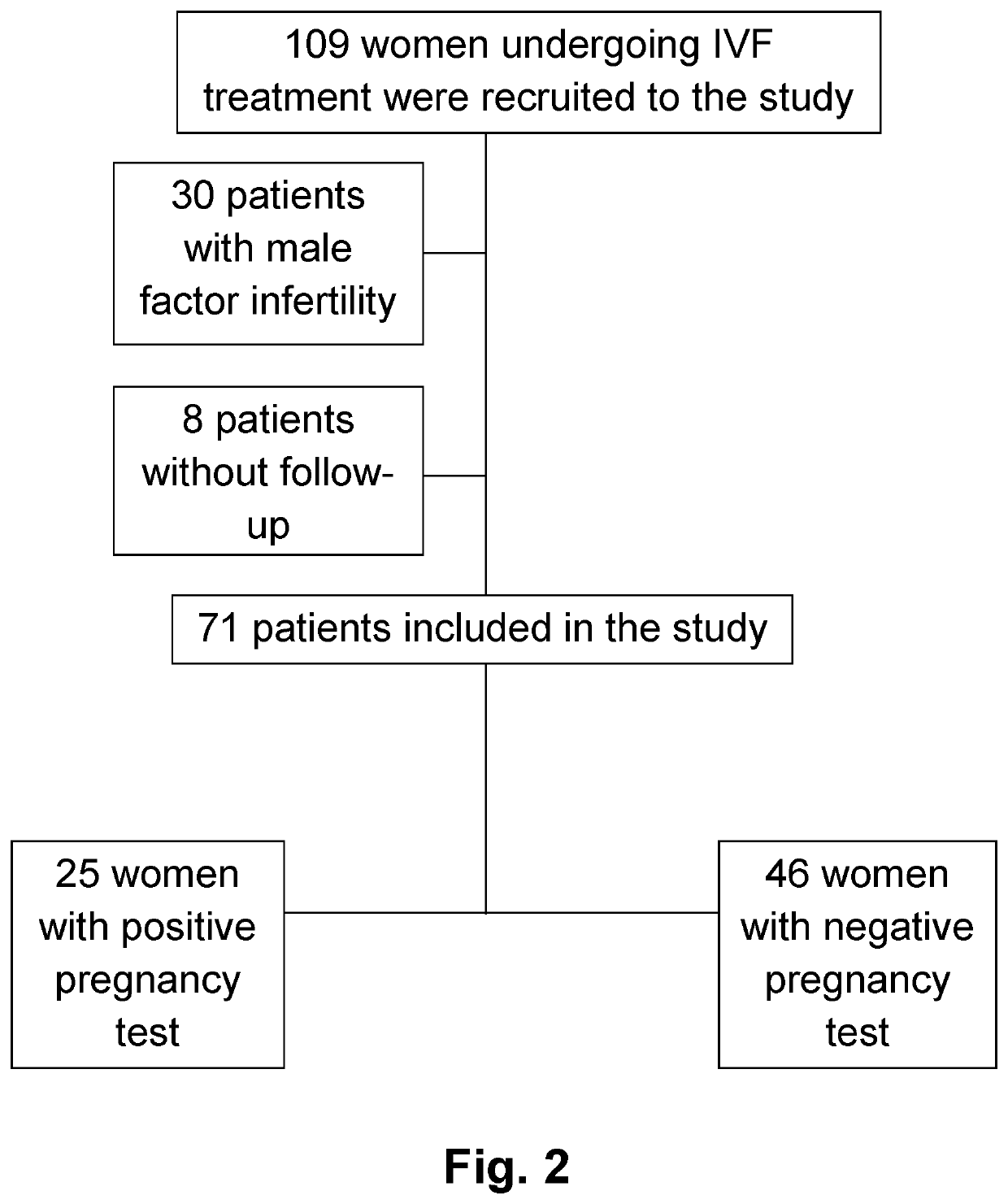Lipid profiling methods for predicting positive pregnancy outcome
a lipid profiling and pregnancy outcome technology, applied in the field of determining the outcome of a pregnancy, can solve the problems of many infertility complications, low success rate of ivf in each treatment cycle, and many specific mechanisms still poorly understood
- Summary
- Abstract
- Description
- Claims
- Application Information
AI Technical Summary
Benefits of technology
Problems solved by technology
Method used
Image
Examples
example 1
[0145]Optimization of the Lipid Extraction System from Follicular Fluid
[0146]A specific objective of the instant invention is to define the metabolic alterations in the microenvironment of the oocyte that are associated with pregnancy outcome, and that may influence oocyte development. To optimize sample preparation for the highest yield of metabolites from the FF, different extraction systems were tested. Surprisingly, chloroform extraction of the aqueous FF yielded the highest total number of metabolites, and the highest number of most abundant metabolites (FIGS. 1A-1C), suggesting that lipids constitute a major component of the FF metabolome. The lipid extraction procedure from the FF was further optimized by a mild acidification that resulted in increased yields of lipids (FIGS. 1B and 1C). This extraction system was therefore utilized for the preparation of samples of the main cohort of IVF patients.
example 2
[0147]Clinical Data and Preliminary Assessment of FF Lipid Profiles from Women Undergoing IVF
[0148]A total of 109 women underwent fresh embryo transfer with US guidance. After the exclusion of patients with male factor background, or unknown pregnancy outcome, the FF lipid composition of 71 patients (FIG. 2) was taken for lipidomics analysis. Demographic and gynecologic features as well as IVF treatment—related data are presented in Table 3. As expected, the clinical data points to differences between the positive and the negative outcome groups in the age and BMI of the patients.
TABLE 3Patient characteristics, IVF protocol, and pregnancy outcomePregnancy + Pregnancy −P Characteristic(n = 25)(n = 46)valueAge (yr)34.8 ± 7.1 38.2 ± 5.1 0.02BMI (kg\m2)23.1 ± 6.6 27.4 ± 6.8 0.01Gestation1.2 ± 1.20.8 ± 1.20.26Deliveries0.6 ± 0.90.2 ± 0.50.05Miscarriages0.5 ± 0.80.5 ± 0.90.93Infertility diagnosisOvulation470.93dysfunctionMechanical factor450.53Unexplained12250.61infertilityPGD340.66No. of...
example 3
[0150]Statistical Analyses Show that Lipid Composition from Positive Outcome FF is Distinct from that of Negative Outcome FF
[0151]A partial least squares discriminant analysis (PLS-DA) of all FF-originated features (1571) showed a separation between the FF lipid composition of positive and negative outcome patients (FIG. 3A; R2=0.83 and Q2=0.47). To address a possible overfit, a permutation test was performed with 1000 permutations, suggesting prediction accuracy during training of empirical p value: p<0.001. The alterations in the lipid composition of positive outcome patients is underscored by a heat map of the top 100 discriminative lipids (based on t-test) between positive and negative outcome FF samples (FIG. 3B).
PUM
 Login to View More
Login to View More Abstract
Description
Claims
Application Information
 Login to View More
Login to View More - R&D
- Intellectual Property
- Life Sciences
- Materials
- Tech Scout
- Unparalleled Data Quality
- Higher Quality Content
- 60% Fewer Hallucinations
Browse by: Latest US Patents, China's latest patents, Technical Efficacy Thesaurus, Application Domain, Technology Topic, Popular Technical Reports.
© 2025 PatSnap. All rights reserved.Legal|Privacy policy|Modern Slavery Act Transparency Statement|Sitemap|About US| Contact US: help@patsnap.com



